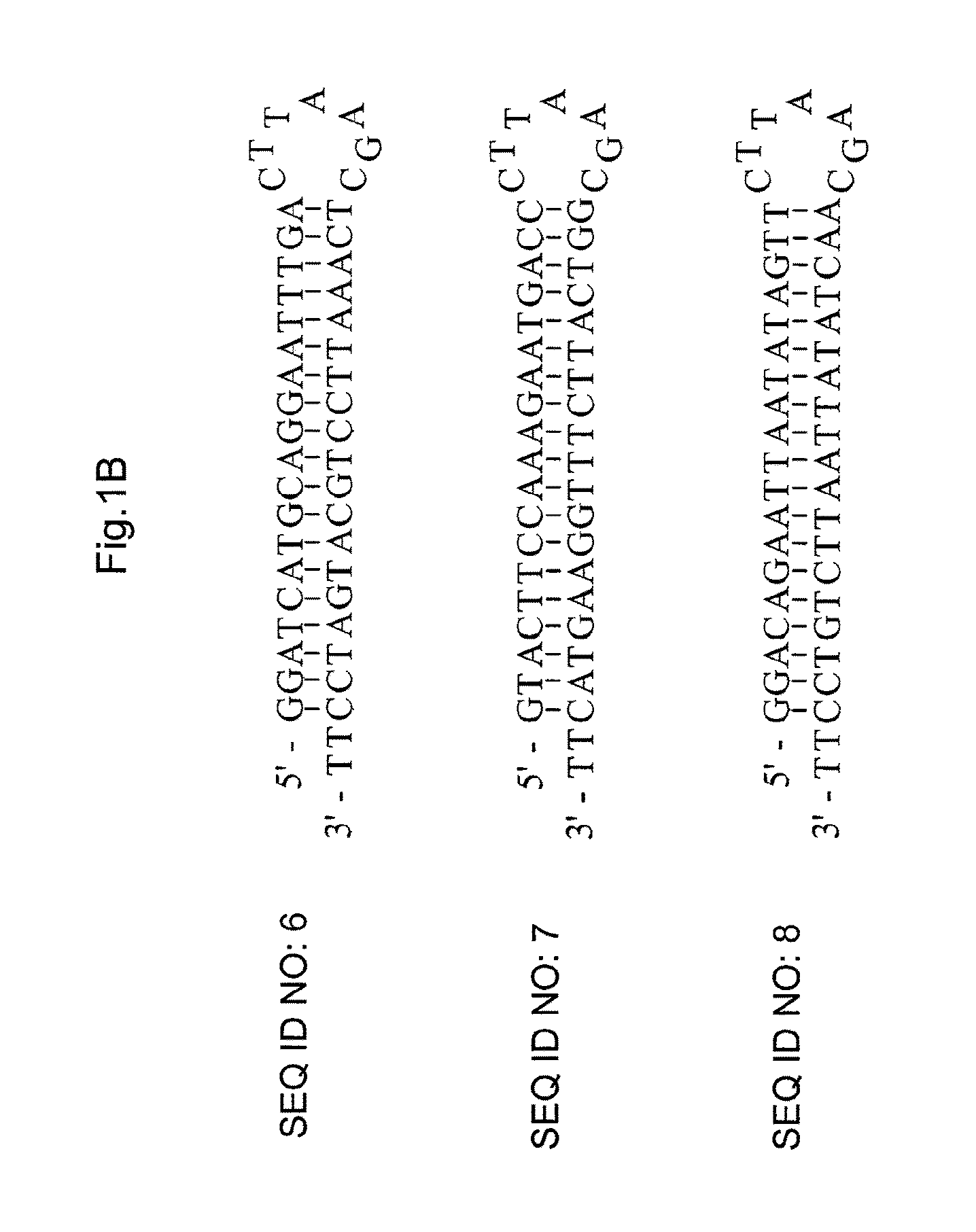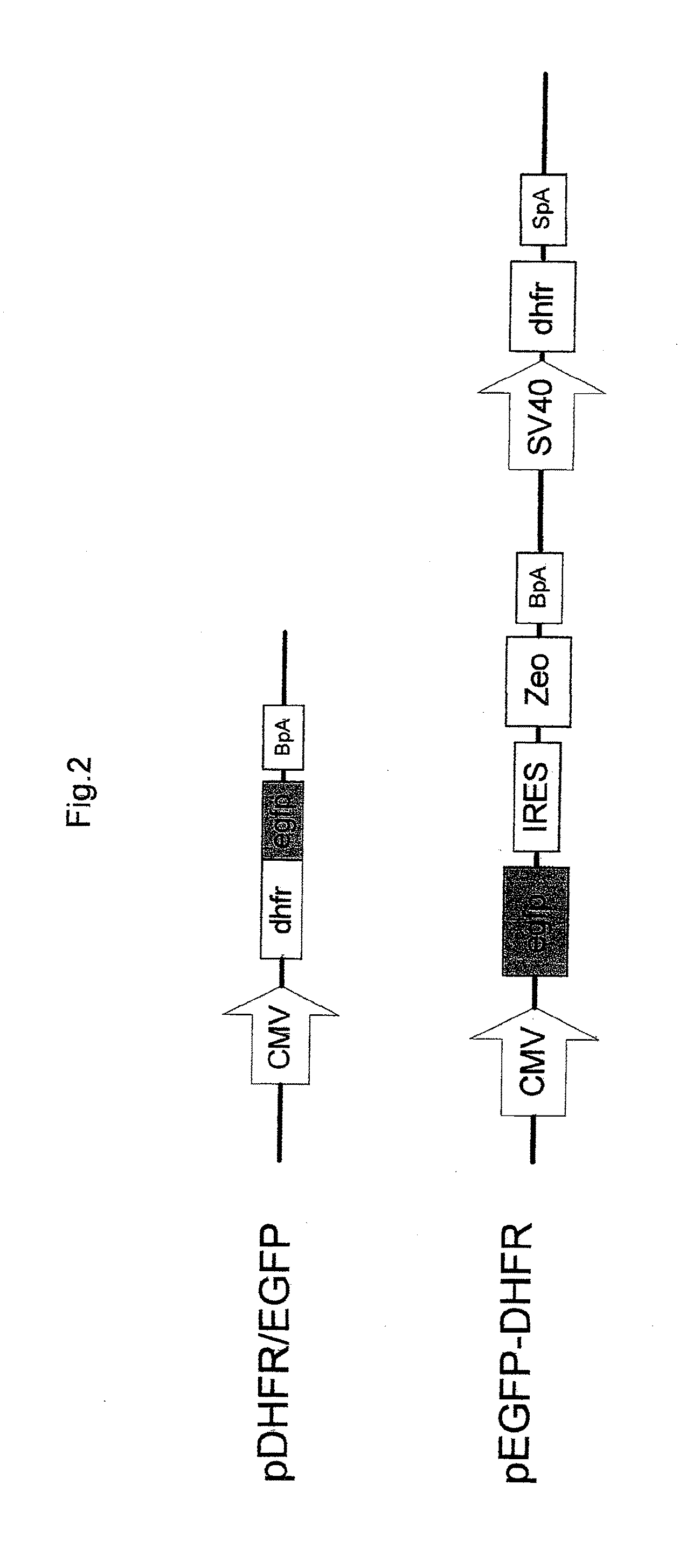Application of RNA Interference Targeting dhfr Gene, to Cell for Producing Secretory Protein
a technology of dhfr gene and rna interference, applied in the direction of active genetic ingredients, biochemistry apparatus and processes, enzymes, etc., can solve the problems of limited efficiency/stability of conventional recombinant protein production, high-producer cell clones remain the most time-consuming process in cho cell expression technology, and the stability problem is particularly significant, so as to achieve stable egfp protein production
- Summary
- Abstract
- Description
- Claims
- Application Information
AI Technical Summary
Benefits of technology
Problems solved by technology
Method used
Image
Examples
Embodiment Construction
Materials and Methods
Construction of Plasmids (i.e., Vectors)
[0048]To evaluate the effect of reducing expression of dhfr gene by the silencing vector provided according to the present invention, reporting vector (pDHFR / EGFP) of dhfr / egfp fusion is used to be co-transfected with the silencing vector in CHO cells (i.e., is mixed with the silencing vector and transfected in CHO cells). Expression of EGFP protein is much easier to be detected than that of DHFR protein (dhfr gene), the effect of reducing expression of DHFR protein (i.e., expression of dhfr gene) by using the silencing vector is thus much easier to be measured by detecting the expression of the reporting vector (pDHFR / EGFP) of dhfr / egfp fusion. The reporting vector (pDHFR / EGFP) of dhfr / egfp fusion is constructed by inserting dhfr / egfp fusion sequence including mouse dhfr cDNA followed by egfp sequence, into BamHI and EcoRI sites of pcDNA3.1(+) driven by cytomegalovirus (CMV) immediate-early gene promoter and enhancer.
[004...
PUM
 Login to View More
Login to View More Abstract
Description
Claims
Application Information
 Login to View More
Login to View More - R&D
- Intellectual Property
- Life Sciences
- Materials
- Tech Scout
- Unparalleled Data Quality
- Higher Quality Content
- 60% Fewer Hallucinations
Browse by: Latest US Patents, China's latest patents, Technical Efficacy Thesaurus, Application Domain, Technology Topic, Popular Technical Reports.
© 2025 PatSnap. All rights reserved.Legal|Privacy policy|Modern Slavery Act Transparency Statement|Sitemap|About US| Contact US: help@patsnap.com



